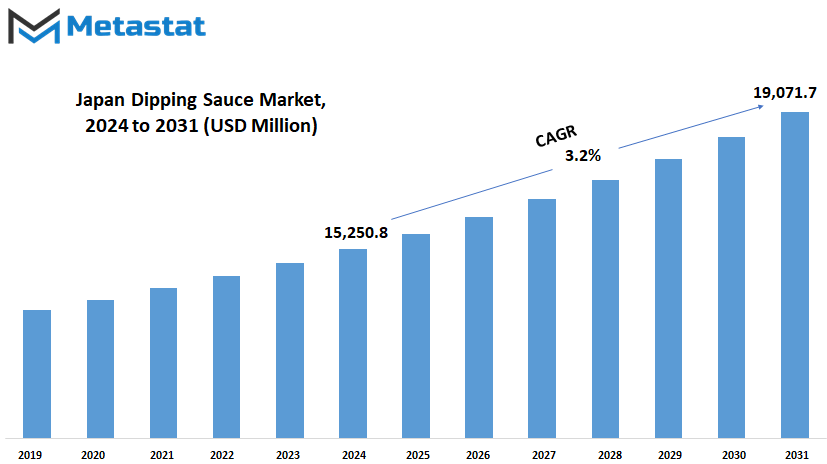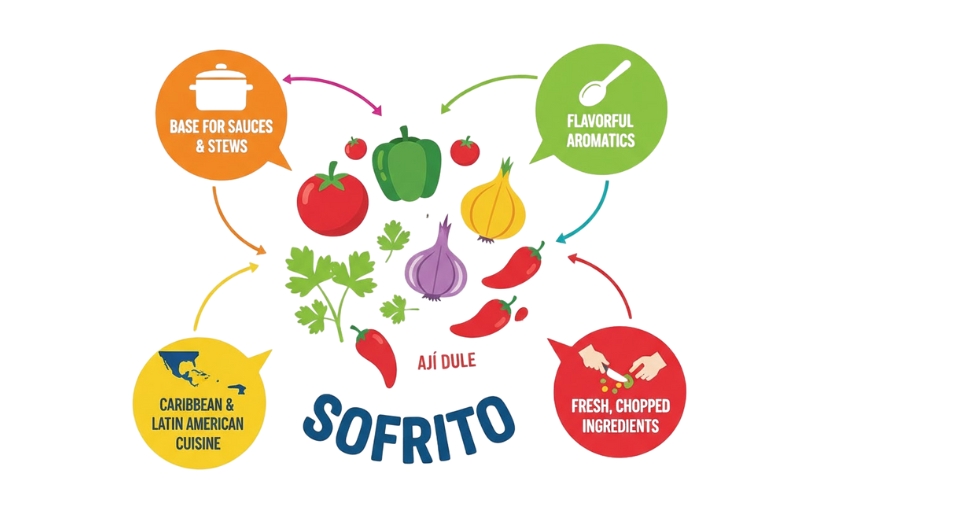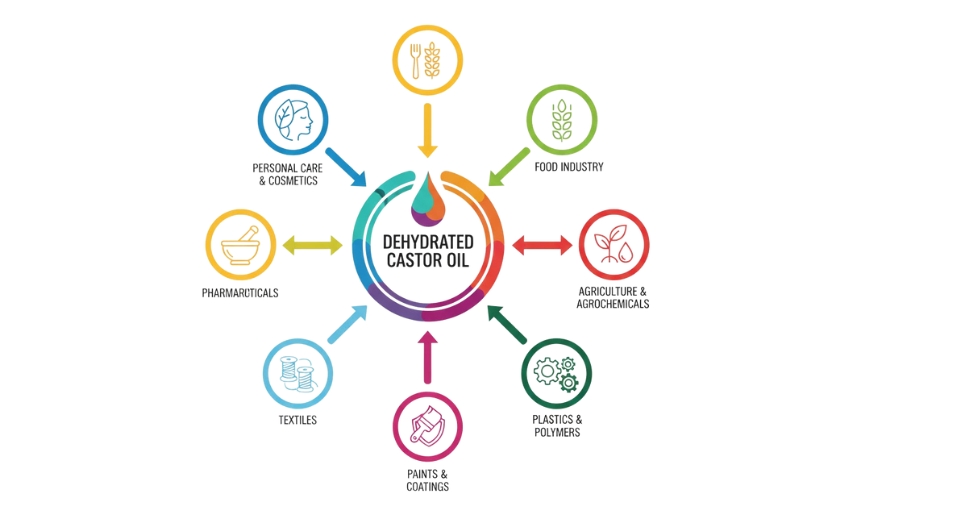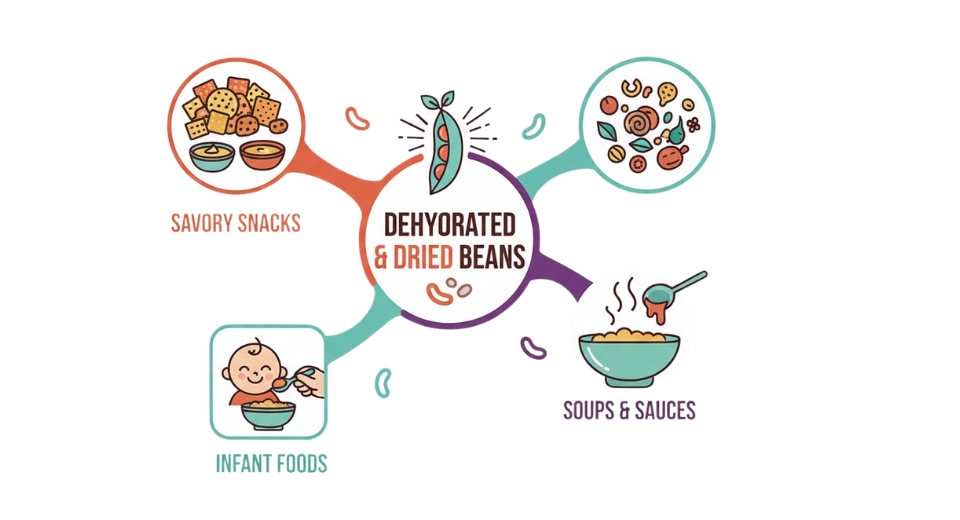MARKET OVERVIEW
The Japan Dipping Sauce market is one of the most exciting areas of the food industry in general, marked by its storied past, cultural associations, and unique flavor characteristics. Very much embedded in Japanese gastronomic culture, these dipping sauces have changed through the years and pegged a place in the delicate and balanced tastes of this Asian nation. From soy-based sauces to more complex blends that include miso, sesame, and citrus, the market is rife with diversity. Each of the sauces constitutes a taste sensation on its own and brings added flavor to the food, from sushi and tempura to grilled meats and vegetables.
Japanese cuisine is representative of great emphasis placed on natural flavors, and dipping sauces fit wholly into the philosophy. Dipping sauces are not serving as condiments but enhancing the ingredients they are paired with. The Japan Dipping Sauce market, therefore, has its rightful place in the gastronomic landscape through influence on local consumption and international culinary trends. With that said, should the popularity of Japanese cuisine surge globally, so would demand for authentic dipping sauces, further rooting these products within the global food culture.
Variation within the Japan Dipping Sauce market is vast. Of course, soy sauce is probably the most ubiquitous, serving as the base among other sauces. Soy sauce has been almost indispensable for cooking and just a dip due to its versatility and depth of umami flavor. There's also ponzu, a sour sauce made with citrus juice, soy sauce, and sometimes mirin or sake. Ponzu really goes well with seafood. Miso-based sauces use fermented soybean paste for salty, slightly sweet flavor, which complements dishes like grilled fish and vegetables. Other tasty sesame sauces with a rich nutty flavor can be used in salads or for cold noodle dishes.
Looking ahead a couple of years, the Japan dipping sauce market is forecasted to grow as more and more people discover and grow to appreciate the depth and diversity that dipping sauces can offer. Innovation will continue to keep the industry moving, offering new flavors and combinations answering traditional tastes and modern preferences. How well this market will balance adapting to changing consumer demands with preserving its heritage is going to be important for its long-term growth.
The influence of the market does not stop at Japan itself. Due to increased international interest in Japanese cuisine, there is no doubt that the Japan Dipping Sauce market will prove to be the absolute key in changing culinary habits all over the world. Professional chefs and home cooks will look en masse to these sauces for duplicating the Japanese recipes at an international level. Such cross-cultural culinary exchange will promote an appreciation for Japanese food traditions and encourage integration of these sauces into diverse culinary repertoires.
Advancing production techniques and concentrating on high-quality ingredients that are sourced locally is likely to benefit the industry. It would follow, then, that the quality and appeal of dipping sauces will increase to meet the discerning Japanese and global consumers. Sustainability and natural ingredients will also receive great reception from the health-conscious consumers, a fact that will further boost the prospects of the market.
The Japan Dipping Sauces market lies at the junction of heritage and innovation—the very soul of Japanese culinary artistry. With such a rich history steeped in tradition and culture, combined with its forward, groundbreaking approach to flavor and quality, it will find relevance and be alluring. As the world becomes one big village, globalization will make unique sauces spread to far and wide places, reaching many kitchens and dining tables everywhere. It does so in a manner where the Japan Dipping Sauce market further enriches the global gastronomic setting with a taste originally from Japanese gastronomic heritage.
Japan Dipping Sauce market is estimated to reach $19,071.7 Million by 2031; growing at a CAGR of 3.2% from 2024 to 2031.

GROWTH FACTORS
The japan dipping sauce market is expected to grow significantly in the next few years, driven by some positive forces. One of the major forces is the growing popularity of international cuisine. In other words, with Japanese consumers increasingly reaching out to more varied culinary experiences, demand for an equally large portfolio of dipping sauces naturally picks up. This is a reflection of a wider trend of Americanization of global flavors and specialty dining experiences that promote this increase in the dipping sauce market in Japan.
Another key driver for this growth in the market comes from the increasing trend of snacking and convenience foods. Busy lifestyles have yielded a trend favoring quick meal solutions that heighten the demand for ready-to-use dipping sauces, which are expected to offer a lot of convenience in enhancing meals without requiring extensive preparation.
Despite these positive growth factors, the market faces certain challenges. The potential health worries over the high sugar, salt, and preservative content found in certain dipping sauces may turn out to be a restraint to market growth. In case consumers actually become health conscious, that would be greater demand for products aligned with healthier eating habits—this shift in consumer preference could cap the growing demand for traditional dipping sauces that do not meet these evolving standards.
More than that, the strong competition between brands may pose a challenge to market expansion and profitability. The dipping sauce segment has a huge number of players, which makes it very competitive. Brands are continuously trying to innovate and differentiate in order to maintain their position in the minds of consumers. This kind of pressure is bound to affect profit margins and the dynamics of the market at large.
These challenges can also turn into opportunities. Immense scope lies in the developing and marketing of healthier, low-calorie dipping sauce options. A company can capture this increasing segment by simply catering to health-conscious consumers who desire health without compromising on taste. This possible inclination of the market toward healthier products will turn highly remunerative in not-too-distant future.
The overall outlook of the Japan dipping sauce market is toward growth, driven by increasing international culinary influences and increasing demand for convenience foods. Though some darkening clouds loom on the horizon with health concerns and fierce competition, it also opens up opportunities for innovation and new, healthier alternatives. Moving forward, the ability to adapt to consumer preference and keep pace with emerging trends will be key to succeeding.
MARKET SEGMENTATION
By Category
The dipping sauce market of Japan is foreseen to grow significantly with some promising developments happening in its categories. One such trend in this regard is the segmentation of the dipping sauce market into organic and conventional products. This division, more or less, mirrors wider consumer inclinations and trends that will shape the future of this market. For instance, dipping sauces become very popular among health-conscious consumers. These sauces are made from natural ingredients, thus avoiding synthetic additives and preservatives that most consumers insist on doing without in a move towards cleaner, more sustainable food. Be that as it may, health and environmental impact are going to be among the top priorities in the next few years by consumers, with fast-rising demands for organic products. This change in consumer preference could therefore fuel innovation and expansion in the organic sector by making producers innovate new types to cater to these preferences.
On the other hand, conventional dipping sauces are still very fundamental to the market due to their affordability and familiarity to a lot of customers. The conventional sauces are mostly made via the traditional process using conventional ingredients that might also contain preservatives in order to enhance shelf life. The conventional segment is going to keep on forming an important part of the market, driven by established presence and wide consumer base.
These two segments are likely to interact dynamically in the Japan dipping sauce market in the future. With the increasing demand for organic variants, manufacturers would be required to cater to it, while at the same time, they would have to serve the rather large consumer base of conventional dipping sauces. Companies could very much be innovating in processes to increase the quality and sustainability of dipping sauces while aligning consumer taste. Market players could introduce new flavors and formulations to gain reach across a range of consumer segments.
The segmentation into organic and conventional classes itself illustrates a broader trend of customization and specialization in food in general. So, with changing consumer preference, it will evolve over time as the market will continue to capture both traditional and novel ways to meet such diverse demands. Only then will competitiveness be retained and growth achieved in the dipping sauce market of Japan.

By Product Type
The Japan Dipping Sauce market is poised to experience tremendous evolution while continuing to venture into an ever-increasingly diversified and dynamic landscape. It is different product types—Tomato Sauce, Mustard Sauce, Soy Sauce, Barbecue Sauce, other specialty—that will help shape the future of the market, owing to changing consumer preference and new emerging trends. Each category will see different growth patterns due to changing taste and innovative food preparation.
Tomato Sauce, being one of the major staples in Japanese cuisine and other cuisines in general, will definitely remain always in high demand. The reason is that such food can substantially enhance the flavor profile of a lot of dishes, and hence its demand will always be steady. Interest in gourmet and artisanal tomato sauces will rise with changes in the trends of cuisine and surging demands of people seeking qualitative and unique taste experiences. The innovation in this segment is likely to come in flavor combinations and packagings that appeal to a more discerning audience.
Although mustard sauce is not that much highlighted in classical Japanese cuisine, with the growing interest in international cuisine and fusion dishes, it will certainly attract attention. With the consumers getting more and more adventurous in their food choices, the mustard sauce will find its place in many usages from casual dining to high-end restaurants. The newer versions could be related to new flavors and blends that would fit both classic and modern tastes.
Soy Sauce remains rooted in Japanese cuisine, and the market is well established. Innovations in production processes and flavor enhancers will be key to this product’s future relevance. Demands for low-sodium and organic soy sauces will rise as heath-conscious individuals look to reduce their salt intake but not at the expense of the rich umami flavor soy sauce has.
Thanks to its growing use in grilling and outdoor cooking, barbecue sauce will see steep growth. With Japanese consumers joining the global trend in barbecue, opportunities in this market grow. Development of unique regional flavors and blends answering both domestic tastes and international influences will allow for a product range diversified for consumers.
Other specialty sauces will also continue to fuel market growth. This includes a variety of niche products, such as exotic ingredients and unique flavor profiles. With the evolving Japanese palate, these sauces are going to service niche markets and emerging food trends with new taste experiences and culinary possibilities.
With all this, the dipping sauce market of Japan is all geared up to go through a sea of change. The different product types, such as tomato sauce and mustard sauce, soy sauce, and barbecue sauce, are going to turn out to be drivers for this growth. As consumer preference keeps changing with new culinary trends, adaptation and changes will be seen in every product category that will shape the future of the market.
By Distribution Channel
In this ever-expanding Japan Dipping Sauce market, the distribution channels would represent an important key driver for the future of the industry. Distribution will have to cope with the changing taste preferences of consumers in light of convenience and variety. Broad segmentation of the distribution channels with their diverse attributes and growth potential is represented in the following.
Supermarkets and hypermarkets will continue to contribute to the growth of the Japan Dipping Sauce market. Large retail spaces where the availability of products ranges from a variety of options under one roof make it convenient for shoppers to stock up with various items, including dipping sauces. Variety and quality are easily assured since there are vast numbers of products to choose from, and the consumers can see the sauces in person. In the future, the addition of private labels and specialty goods into this channel will also benefit from the growing demand for specialty and gourmet dipping sauce products.
Convenience and grocery stores will also maintain a strong market presence. These smaller, more-local stores meet consumer demand for quick and easy access to their everyday needs. With lives that are becoming ever faster, demand for convenience will continue to drive this segment forward. It will probably mean that convenience stores increase their range of dipping sauces, including more popular and fast-moving varieties that meet the consumer’s preference for quicker and more accessible solutions. Innovations in ready-to-use packaging and better product visibility will make this group of busy shoppers very interested.
Online retail stores will further gain significance in the Japan Dipping Sauce market. The trend of e-commerce and electronic shopping platforms has changed the way consumers buy their products, much more conveniently and with added ease of choice in terms of the portfolio of sauces. They do have the advantage of offering home delivery, and this definitely puts them head and shoulders above the competition with The growing number of consumers who would like to shop from the comfort of their own homes. Online retail is going to continue increasing even faster in the future, as technological and logistical developments continue to move the way of shopping forward and more and more products become available.
Though less prominent as compared to the types mentioned above, other distribution channels will still make a difference. These include specialty stores, gourmet shops, and food festivals. They can offer special opportunities in terms of reaching niche markets to dipping sauce brands. Most of these channels usually focus on just a specific dimension of interest by consumers and give out a place for the introduction of innovative or handmade products.
|
Report Coverage |
Details |
|
Forecast Period |
2024-2031 |
|
Market Size in 2024 |
$15,250.8 million |
|
Market Size by 2031 |
$19,071.7 Million |
|
Growth Rate from 2024 to 2031 |
3.2% |
|
Base Year |
2022 |
COMPETITIVE PLAYERS
In the future development, the Japan dipping sauce market is going to experience some remarkable changes, since a number of companies in the industry are known to have major influence on consumer tastes and preferences. Among these major companies are Bell Foods Co., Ltd., Ajinomoto Co., Inc., Yamasa Corporation, and other key players such as S&B Foods Inc. and Kikkoman. Having innovative products and comprehensive distribution networks, the drivers have set up leading positions in the industry.
Bell Foods Co., Ltd. has been committed to the market with a great variety of dipping sauces, from classical to modern. Ajinomoto Co., Inc. further drives the growth by underlining its focus on quality and flavor enhancement, while Yamasa Corporation keeps remaining the key player thanks to its long-standing expertise in soy sauce production. While S&B Foods Inc. and Kikkoman are of great prominence, their individual impacts differ quite a lot in nature: Kikkoman exudes influence globally, while S&B Foods Inc. does so with specialty products.
As the market evolves, Miyajima Shoyu Co., Ltd. and Mizkan will enhance their competitive strategies by coming up with new innovative products that will enable firms to adapt to changing consumer tastes. The emerging trends and tastes will be cashed in on by Otafuku Foods and Kewpie Corporation through further diversification of their products to suit a larger audience.
In the coming years, this is going to be driven by innovations in new flavors that are unique as well as premium products as brought about by Bourbon Barrel Foods and Ebara Foods Industry, Inc. On the other hand, Kagome Co., Ltd. and Nichirei Corporation are likely to engage in product line expansion and the creation of distribution efficiency to stay competitive in the market. The tradition of quality and authenticity would no doubt be upheld in the future by Yamaroku, Takahashi Shoyu Co., Ltd., and Daisho Co., Ltd., which adds richness and diversity to the market.
Innovation in products and maintenance of quality will also make Morita Co., Ltd. and Hinode Shoyu Co., Ltd. gain ground. The companies will seek to improve their presence and reach their customers at home and abroad, thereby capturing the changing concepts in Japan Dipping Sauce Market.
In other words, strategic steps taken by these top-notch players will be the one that will continuously bring dynamic change in the Japan dipping sauce market. The innovative works and the move in line with the changing tastes and preferences of consumers will outline the future course of the market, filled with opportunities and challenges.
Japan Dipping Sauce Market Key Segments:
By Category
- Organic
- Conventional
By Product Type
- Tomato Sauce
- Mustard Sauce
- Soy Sauce
- Barbecue Sauce
- Others
By Distribution Channel
- Supermarkets/Hypermarkets
- Convenience/Grocery Stores
- Online Retail Stores
- Other Distribution Channels
Key Japan Dipping Sauce Industry Players
- Bell Foods Co., Ltd
- Ajinomoto Co., Inc.
- Yamasa Corporation
- S&B Foods Inc.
- Kikkoman
- Miyajima Shoyu Co., Ltd.
- Mizkan
- Otafuku Foods
- Kewpie Corporation
- Bourbon Barrel Foods
- Ebara Foods Industry, Inc.
- Kagome Co., Ltd.
- Nichirei Corporation
- Yamaroku
- Takahashi Shoyu Co., Ltd.
WHAT REPORT PROVIDES
- Full in-depth analysis of the parent Industry
- Important changes in market and its dynamics
- Segmentation details of the market
- Former, on-going, and projected market analysis in terms of volume and value
- Assessment of niche industry developments
- Market share analysis
- Key strategies of major players
- Emerging segments and regional growth potential








 US: +1 3023308252
US: +1 3023308252






